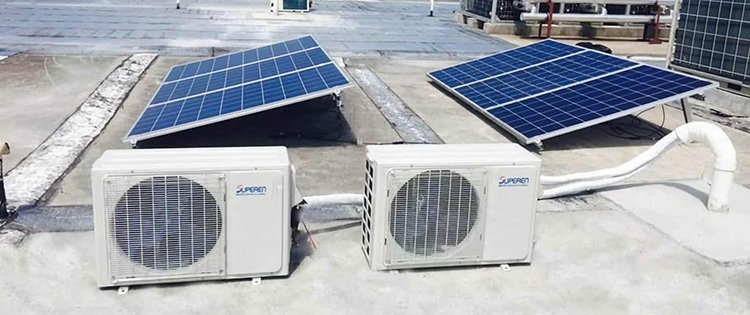As homesteaders, we understand the importance of self-sufficiency and using what we have.
One of the most significant resources at our disposal, is the sun and the free electricity it provides through solar power. With a basic understanding of solar systems, we can combine our little solutions for various needs, including cooling.
In this article, I’ll explore how to make a solar-powered cooling solution using the odds and ends you might have lying around your homestead. So, let’s harness the sun’s power and get creative with our DIY solutions!
Solar Solution Basics
While many companies sell all-in-one solar solutions that can be pretty expensive, at their core, these systems consist of solar panels, battery chargers, and inverters.
So, if you have these components, you could conceivably build your solar-powered cooling solution. Of course, it might not be as sleek and polished as a commercial product, but it can be just as practical and cost-effective. So, don’t be intimidated by the price tags of pre-made solutions, and let’s get creative with the resources we have on hand!
Adding Panels
I have a few solar panels of different sizes and voltages that I plan to use for my solar-powered cooling solution. Remember that you can add panels in series to increase the output voltage.
However, this should be done with some common sense and caution, as you should not connect very high output panels with low output panels. It’s essential to ensure that the boards you are joining have similar electrical properties to avoid damaging them. In addition, you’ll want to use proper wiring and connectors to provide a safe and secure connection.
Related: How To Prepare Your House In Case Of An Emergency
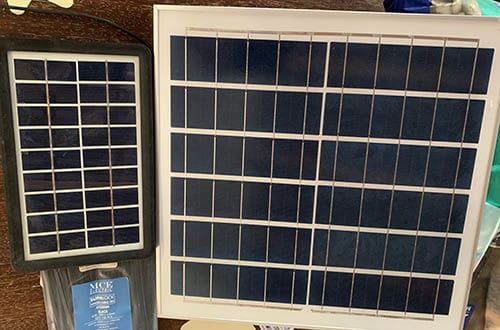
Creating a DC and AC System
In my case, I have two different coolers that I plan to use for my solar-powered cooling solution.
The first is a 12V cooler, which is perfect for use in pickup trucks and camping trips.
The second is a 220V AC water cooler, which I’ll use to keep cold water on hand at my coffee station in my workshop. I also plan to use the 12V DC cooler to cool milk and snacks.
Before using them, I needed to ensure that both coolers were clean and in good working order, as they had been in storage for quite some time. So, after giving them a thorough wash, I was ready to begin my solar-powered cooling project!
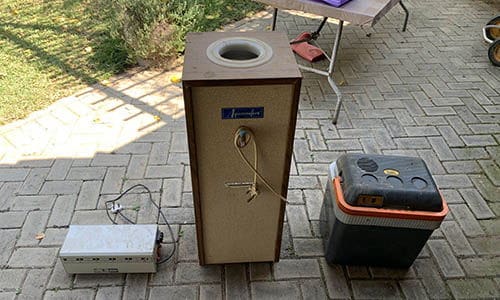
To power my coolers, I plan on using a battery charger capable of charging multiple 12V batteries simultaneously. This charger can be powered directly from the primary power grid or solar panels.
In my case, I’ve connected my solar panels in series on my workshop roof and will be feeding that electricity into the charger. By doing this, I can charge my batteries during the day when the sun is shining and use that stored energy to power my coolers at night when I need them most. It’s important to note that when connecting solar panels to a battery charger, you’ll want to ensure that the panels’ output voltage matches the charger’s input voltage to avoid damaging the charger or the batteries.
Since my 12V cooler works directly from a 12V battery, I’ll connect it to one of my charged batteries to power it.
However, for my 220V AC water cooler, I’ll need to use a battery as the power source for a small inverter. An inverter is a device that converts DC power from a battery to AC power that the 220V AC cooler can use. So, using a battery and inverter combination, I can power my 220V AC cooler with the same energy source that powers my 12V cooler. This setup allows me to run both 12V DC appliances and 220V AC appliances, making my solar-powered cooling solution more efficient and versatile, as I can use both coolers with the same energy source.
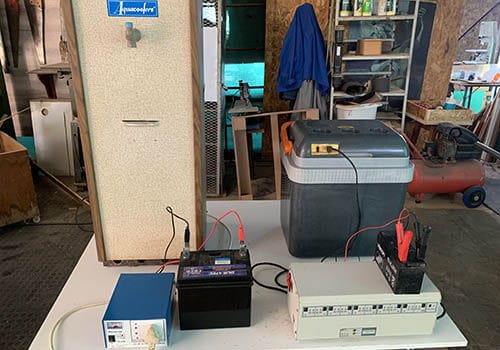
Scale Up
This solar-powered cooling solution is just the tip of the iceberg regarding what you can do with solar power.
You can quickly scale this solution up by adding more solar panels, larger battery chargers, more and larger batteries, and larger inverters. Once you’ve a basic understanding of how it works, you can start to power larger projects, like running whole sections of your home or powering your workshop.
These small-scale solar solutions also power other devices, such as Wi-Fi routers, LED screens, and laptops. With a bit of creativity and some DIY spirit, the possibilities are endless!
Related: 6 Cheap DIY Projects You Can Only Do This Summer
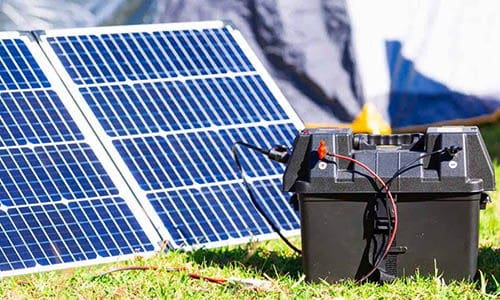
Go Bigger
I’ve been running my solar-powered cooling solution for a few days, and it’s been working great. However, I’ve noticed that charging the batteries with my current solar panel setup takes longer than I’d like. As a result, I’ll need to increase my solar panel capacity to have more current to charge the batteries faster.
Customizable To Your Needs
By doing this, I can ensure I have enough power to run my coolers day and night. The beauty of this solution is that it’s completely customizable and can be adjusted to fit your needs.
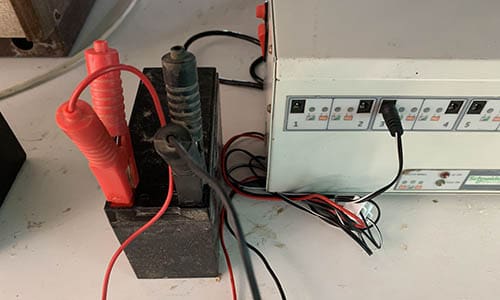
Whether you’re looking to power a small setup like mine or something much more extensive, solar power is a great way to harness the sun’s energy and create a sustainable, reliable source of electricity.
Building a solar-powered cooling solution with odds and ends is an excellent way for homesteaders to create a sustainable source of electricity using what they already have. Unfortunately, many people have fallen into the trap of thinking that everything is super specialized and that only professional people should attempt specific projects.
However, this project is small and safe, and learning the basics of solar power and DIY projects will eventually turn you into a pro. With some knowledge and creativity, anyone can build a solar-powered cooling solution and start living off the grid. So don’t be afraid to dive in and start experimenting with solar power today!
You may also like:
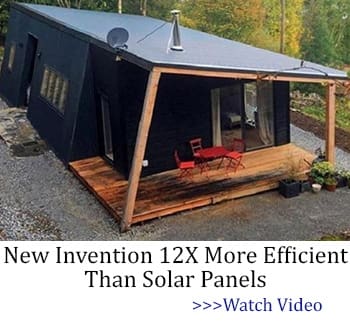 7 DIY Stoves You Can Build In A Crisis
7 DIY Stoves You Can Build In A Crisis
The Biggest Mistakes You Can Make in a Blackout (Video)
How To Keep Eggs Fresh For 12+ Months
If You Have This Plant in Your Backyard, You Will Never Run Out of Soap
